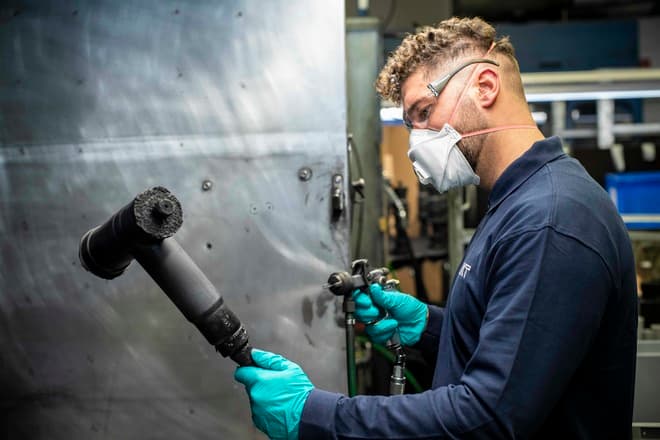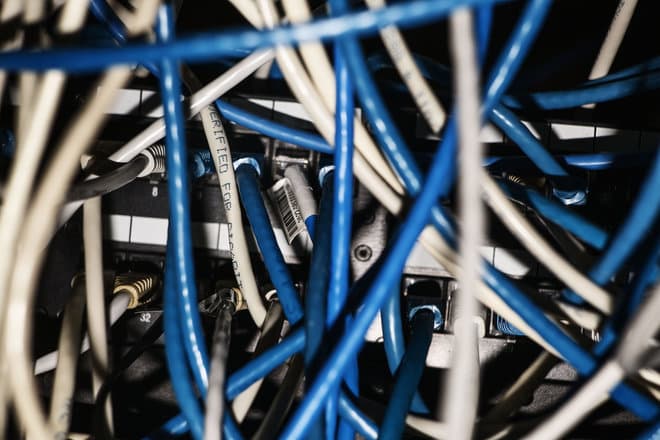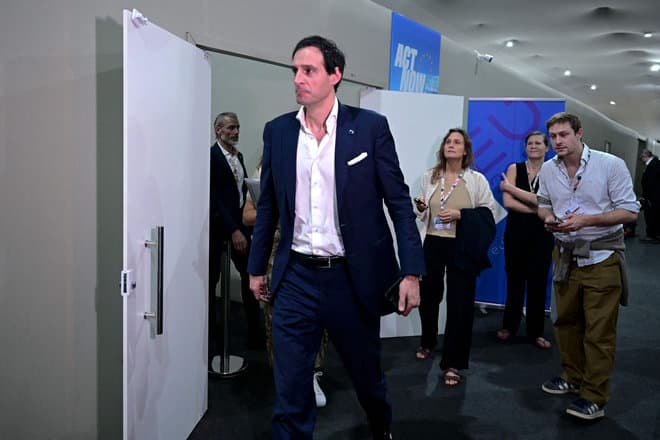
Bunker One is part of the Bunker Holding Group, and it is no small business in marine fuel. Last year, the Danish company sold 30 million tons of marine fuel and is by far the world's largest bunker company.
The headquarters of Bunker One are located in Middelfart – but it is from the company's branch in Aalborg that the future is planned. Here, sales and business development manager Kristian Korsgaard Pedersen has his finger on the pulse of what is happening in the marine fuel industry and what is going to happen in connection with the green transition.
- Marine fuel has been the same for about the last 50 years. It's the bottom of the diesel barrel, and the concept works, but it emits CO2, Kristian Korsgaard Pedersen confirms.
He himself got into the bunker industry by chance when he was very young, because his neighbor was in the industry.
The work has long since become a passion. Anyone who meets Kristian Korsgaard Pedersen feels it.
- Within the last two years, we have noticed an increased interest in CO2 emissions. We want to be part of new fuels here in Aalborg, and we want to use the same method and our existing value chain with tankers and trucks, says Kristian Korsgaard Pedersen.
The new fuels
Here there is a clear expectation that the new fuels of the future will be about methanol and ammonia, while hydrogen is a different matter.
- Not many people believe in hydrogen. It is too difficult to transport and store, he says.
Methanol, on the other hand, is something else, and here Bunker One is ready as soon as the methanol ship engines arrive.
- We are ready to deliver tomorrow if the customers want it, says Kristian Korsgaard Pedersen.
At present, there is the possibility of having two types of methanol delivered.
- We can deliver the grey methanol made from a fossil source and Dutch bio-methanol made from second-generation biomass of plant waste, says Kristian Korsgaard Pedersen.
However, the bio-methanol will be more expensive than the regular grey methanol. This is due, among other things, to the transport from the Netherlands if the bio-methanol is to be sent to Denmark. Skagen is one of the places in Denmark where Bunker One sells oil. A total of 250,000 tons of conventional bunker fuel are sold to ships per month, and Bunker One supplies a large part of that oil. This is done either by truck, tanker on the nest or by pipeline.
The E-methanol, which comes from green wind turbine power, is not yet ready for the shipping market.
- It is not yet available on the scale that shipping needs, says Kristian Korsgaard Pedersen.
In addition to the gray, bio, E-methanol, there is also blue methanol. This has nothing to do with the color of the methanol, but rather how it is produced. The blue one is produced with CO2 from CO2 capture.
All finished forms of mentanol are completely identical, and it is not possible to determine how the product is manufactured.
The fact that the products are identical also means that there is an opportunity to exchange the green E-methanol of the future for the grey methanol, rather than transporting the green one around.
- The upcoming eight methanol-powered Maersk container ships will need to use approximately 360,000 tons of the green methanol. Let's say the green methanol storage is located in Denmark, then it makes good sense that the ships can be refueled in the Caribbean with the grey methanol instead. The amount that is then refueled on the ship in the Caribbean will instead become grey methanol in Denmark, explains Kristian Korsgaard Pedersen.
It is an opportunity to avoid transporting the green fuel around the world. Here is also an important point.
- Of course, it must be done in a way that cannot be cheated, emphasizes Kristian Korsgaard Pedersen.
Some experts only predict ammonia will have a future on very large ships, but Kristian Korsgaard Pedersen does not believe that it will.
- Ammonia does not emit any CO2, and I am sure that we will see more ammonia as a ship fuel in the future on smaller ships as well, states Kristian Korsgaard Pedersen.
Complete conversion to methanol now and then?
Although methanol will be part of the future, speed is an important factor on the way to the conversion.
- Today, approximately between 250 and 300 million tons of bunker fuel are used per year. For comparison, 100 to 110 million tons of methanol are produced per year. This is by no means enough, says Kristian Korsgaard Pedersen.
It is also important to mention here that twice as much methanol must be used to make the ships sail the same distance as with bunker fuel.
And the grey methanol emits only 10 percent less CO2 than bunker fuel. It is only when there is green methanol that there will be a beneficial effect on the planet's CO2 emissions.
- Biofuels cost about three times as much as regular marine fuel, so there must be a reason to choose, he explains.
However, there are EU regulations and the International Maritime Organization (IMO) has initiatives on the way that will affect how quickly the transition will go.
- There is a lot going on, and it is just going fast, says Kristian Korsgaard Pedersen.
Demand, supply and price
Here he is not only thinking about the legislation, but also the customers.
- It is almost as if customers are moving faster in the direction of the green transition than the legislation, he says, mentioning Maersk's order for methanol-powered container ships as an example.
However, there is one thing that you should be aware of if many methanol ships arrive in no time.
- If the conversion happens too quickly, prices will rise, warns Kristian Korsgaard Pedersen.
However, there is an opportunity to change this, as fossil fuels are the cheapest. Here comes a current proposal from COP 26.
- The proposal that has been on the table at COP 26 to impose a global 100 percent tax on fossil fuels makes good sense. It would minimize the price difference and make green fuels more competitive. At the same time, the additional price would be spread out, so everyone would pay a little more, explains Kristian Korsgaard Pedersen.
Text, graphics, images, sound, and other content on this website are protected under copyright law. DK Medier reserves all rights to the content, including the right to exploit the content for the purpose of text and data mining, cf. Section 11b of the Copyright Act and Article 4 of the DSM Directive.
Customers with IP agreements/major customer agreements may only share Danish Offshore Industry articles internally for the purpose of handling specific cases. Sharing in connection with specific cases refers to journaling, archiving, or similar uses.
Customers with a personal subscription/login may not share Danish Offshore Industry articles with individuals who do not themselves have a personal subscription to Danish Offshore Industry.
Any deviation from the above requires written consent from DK Medier.






























